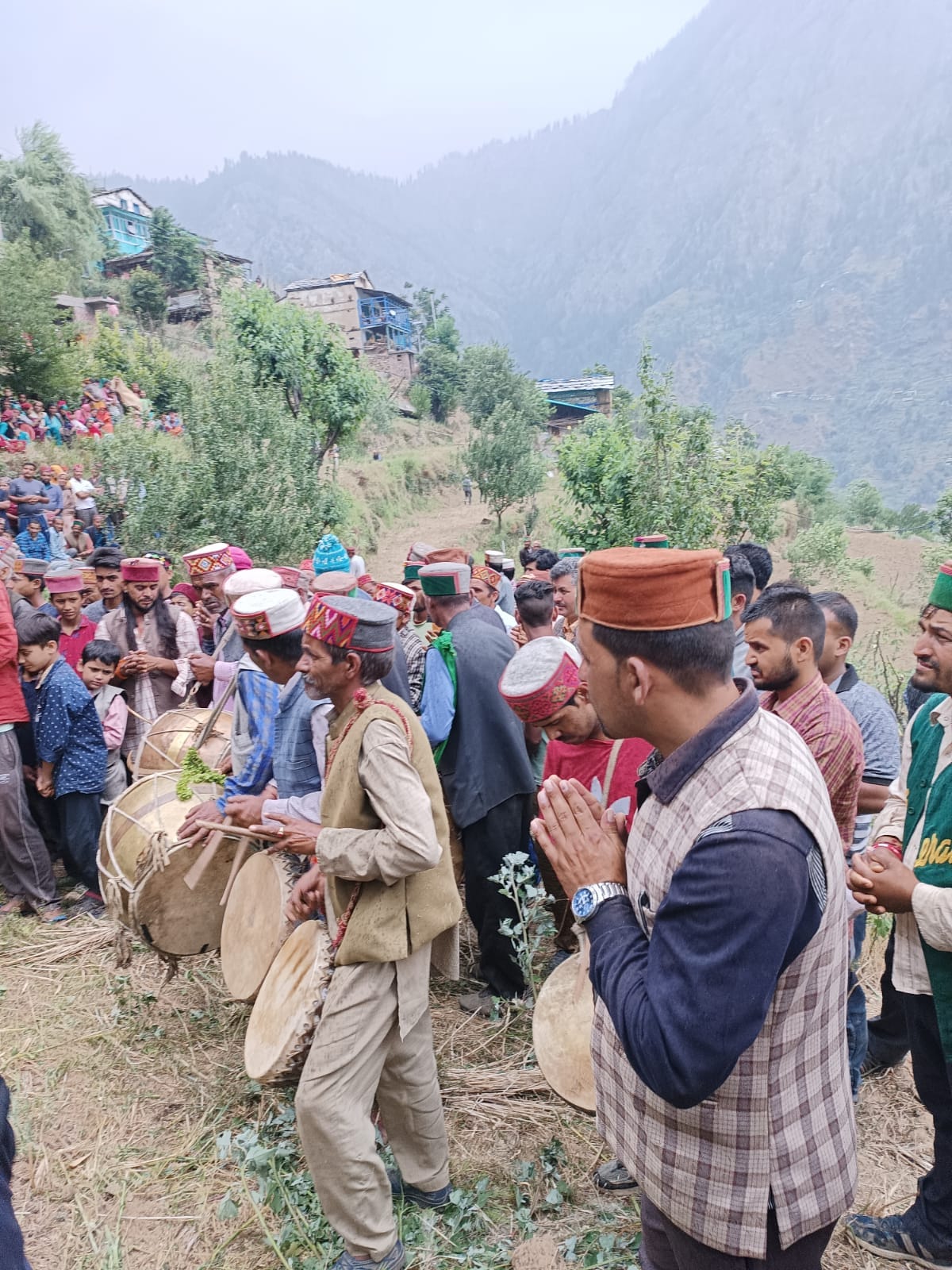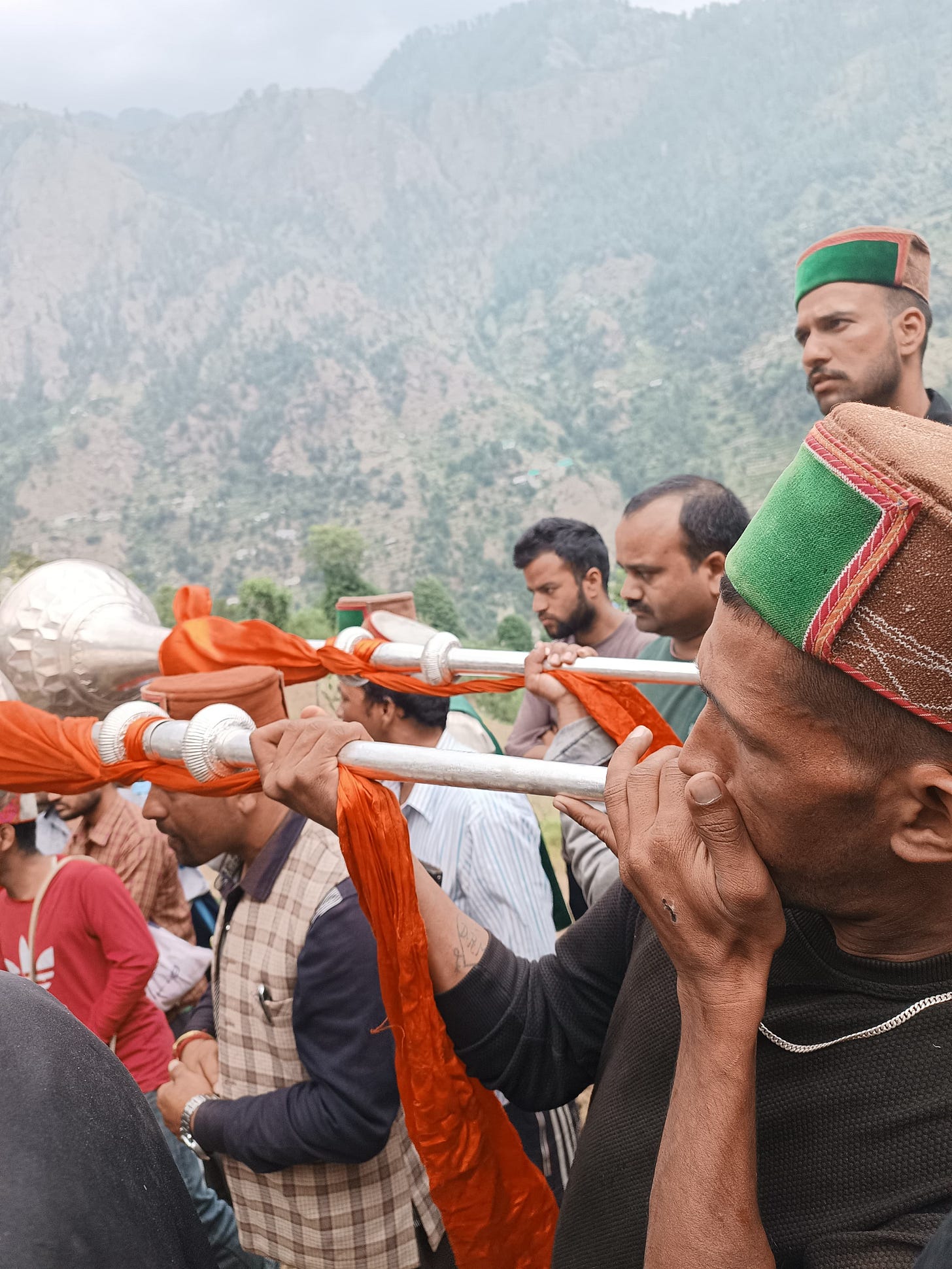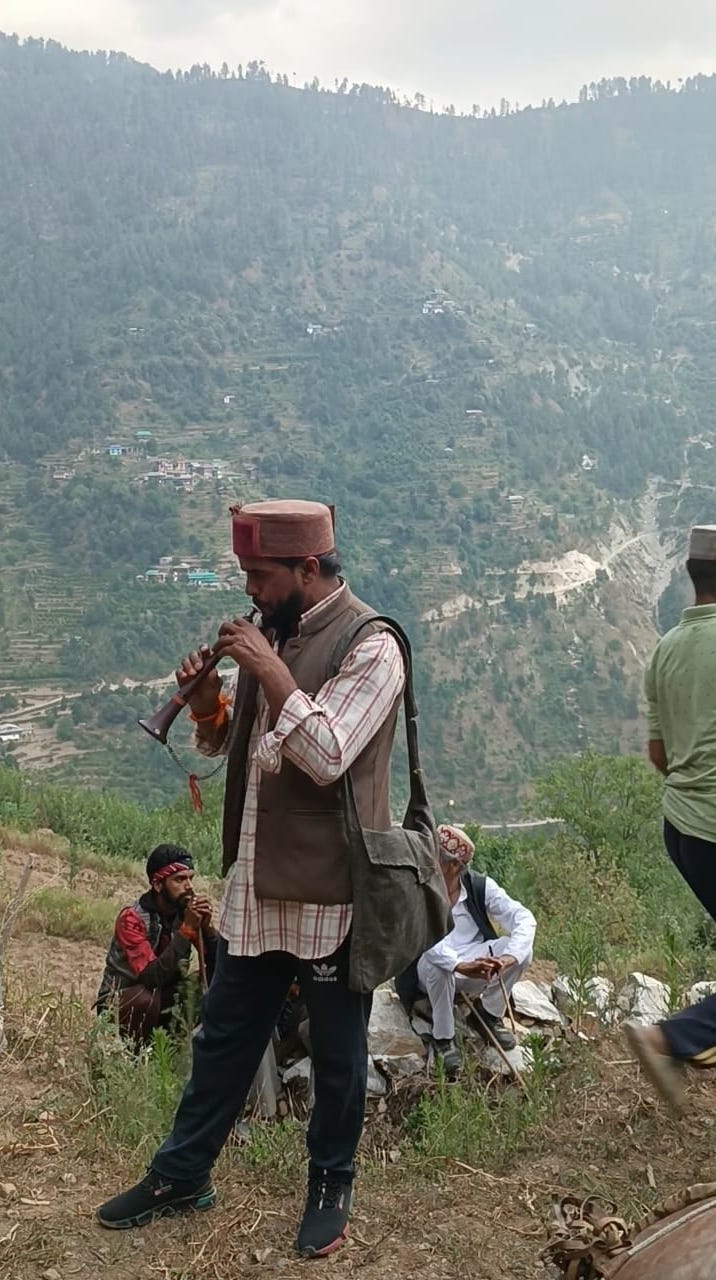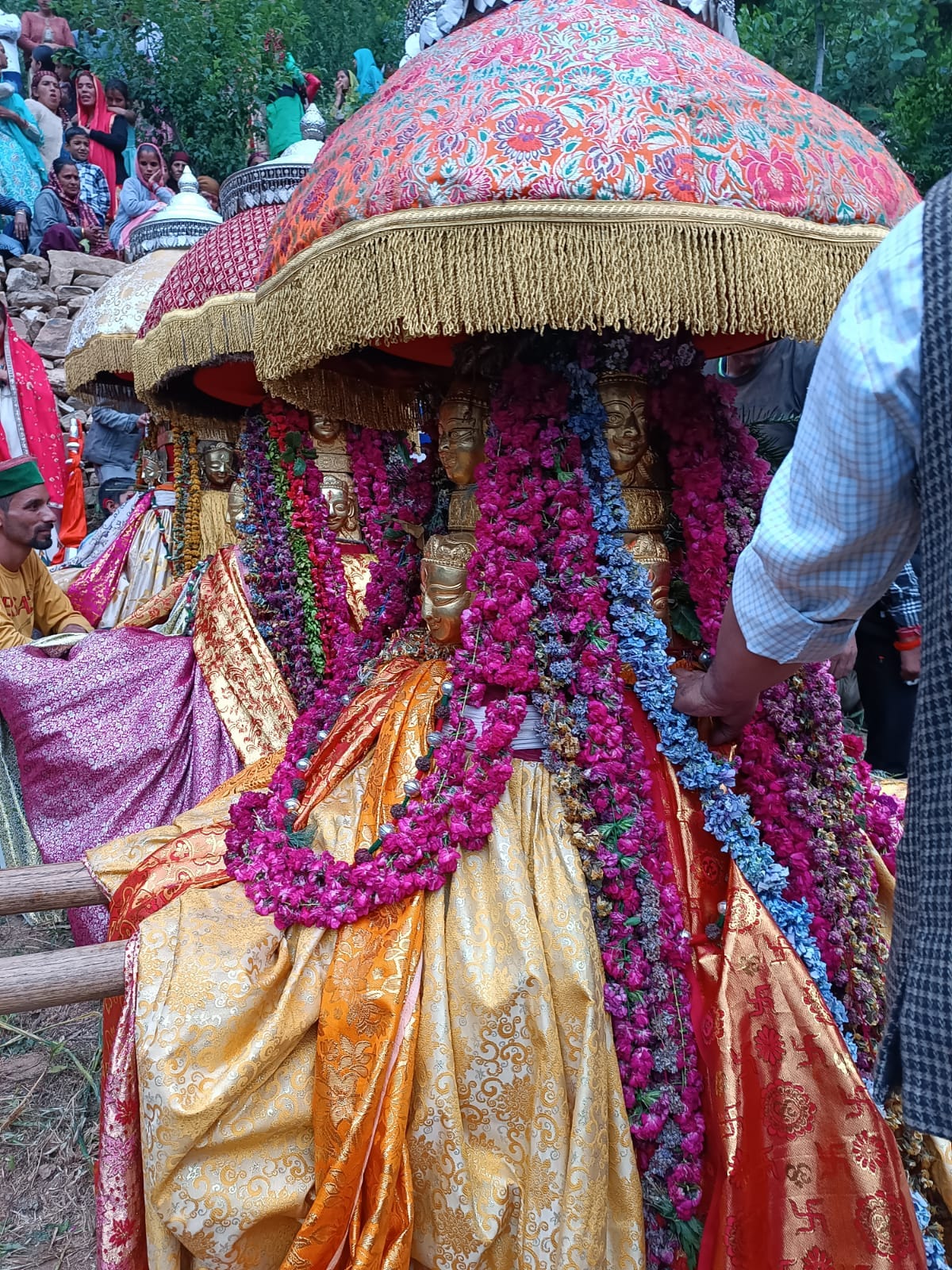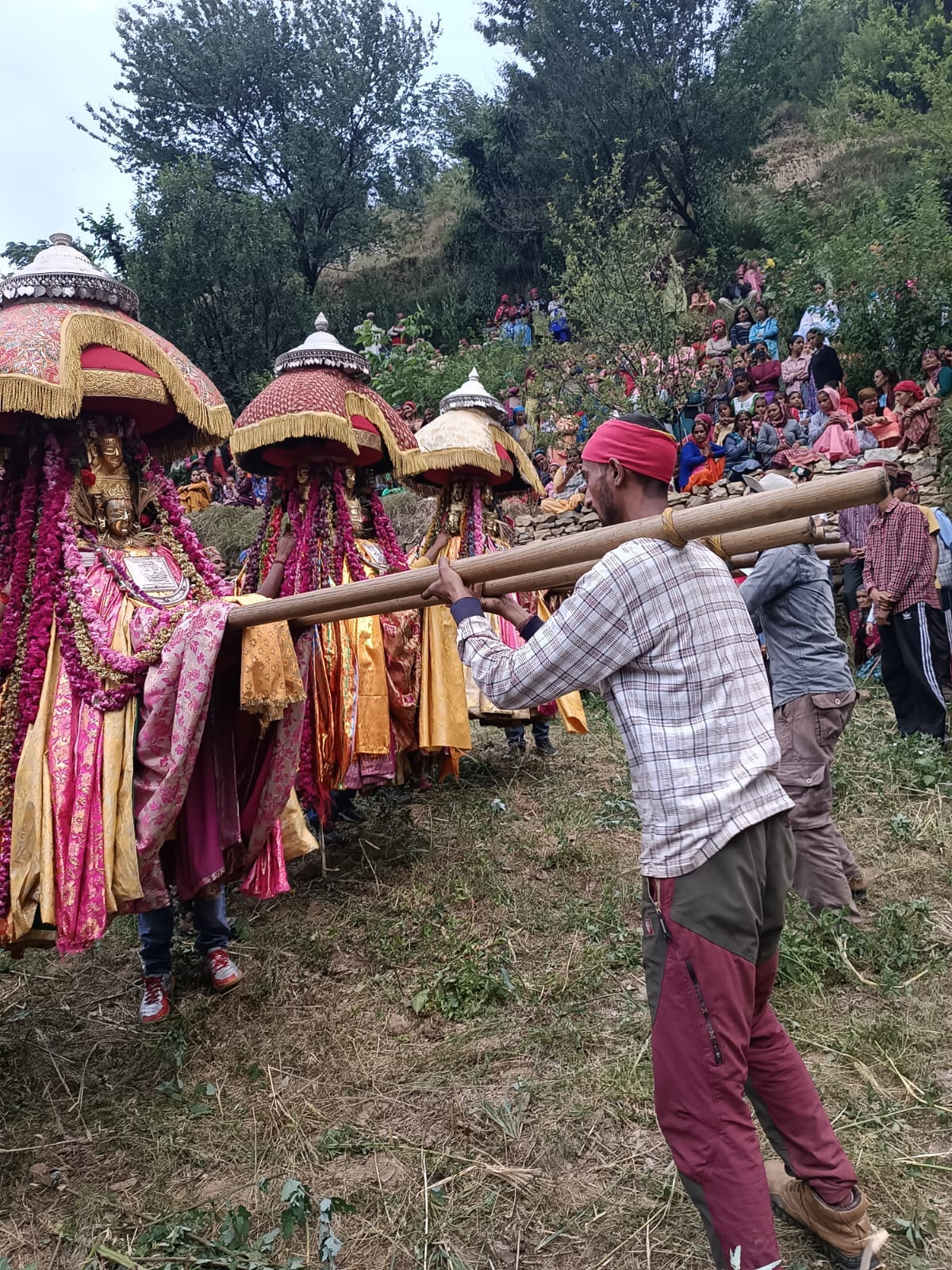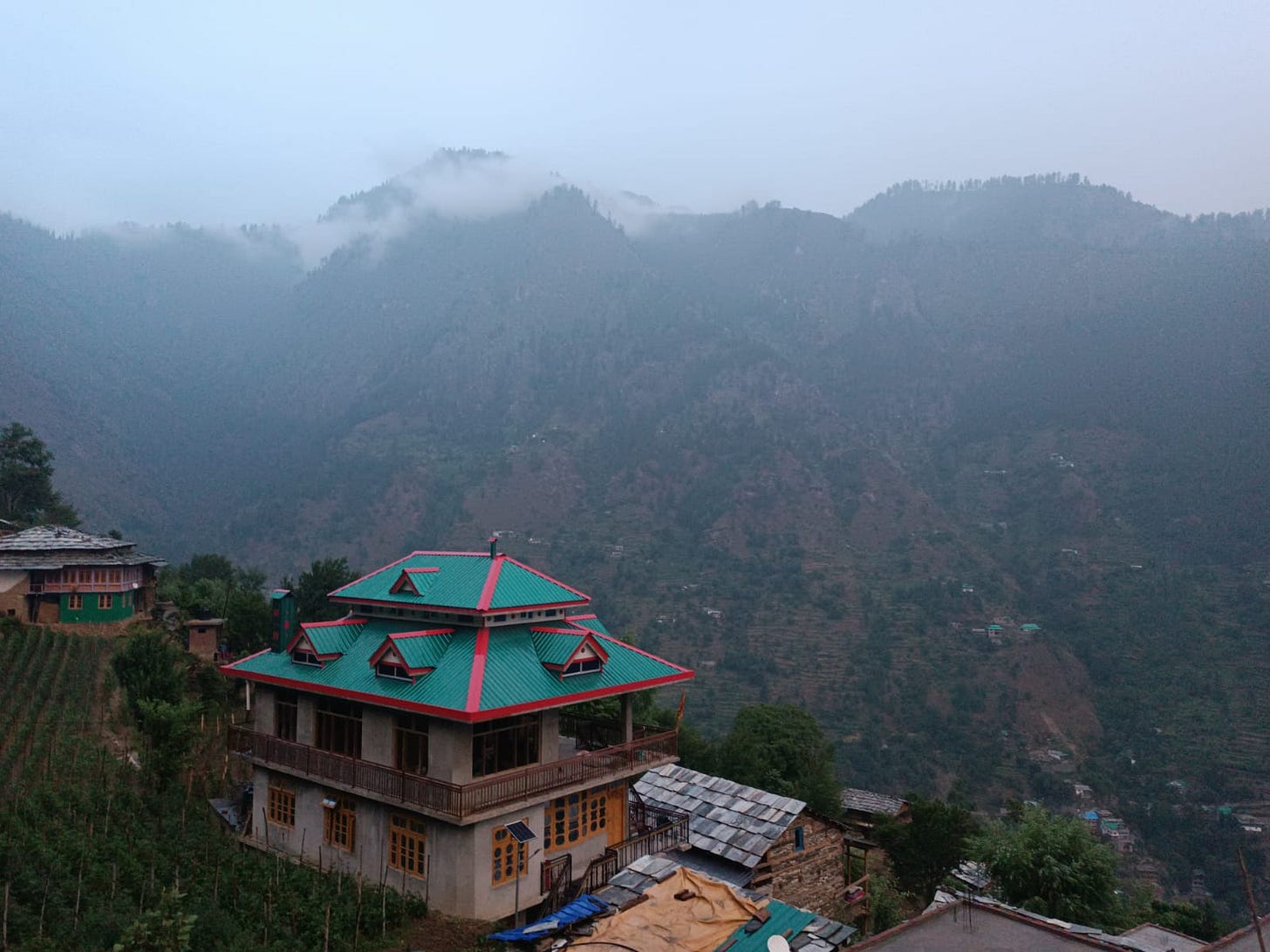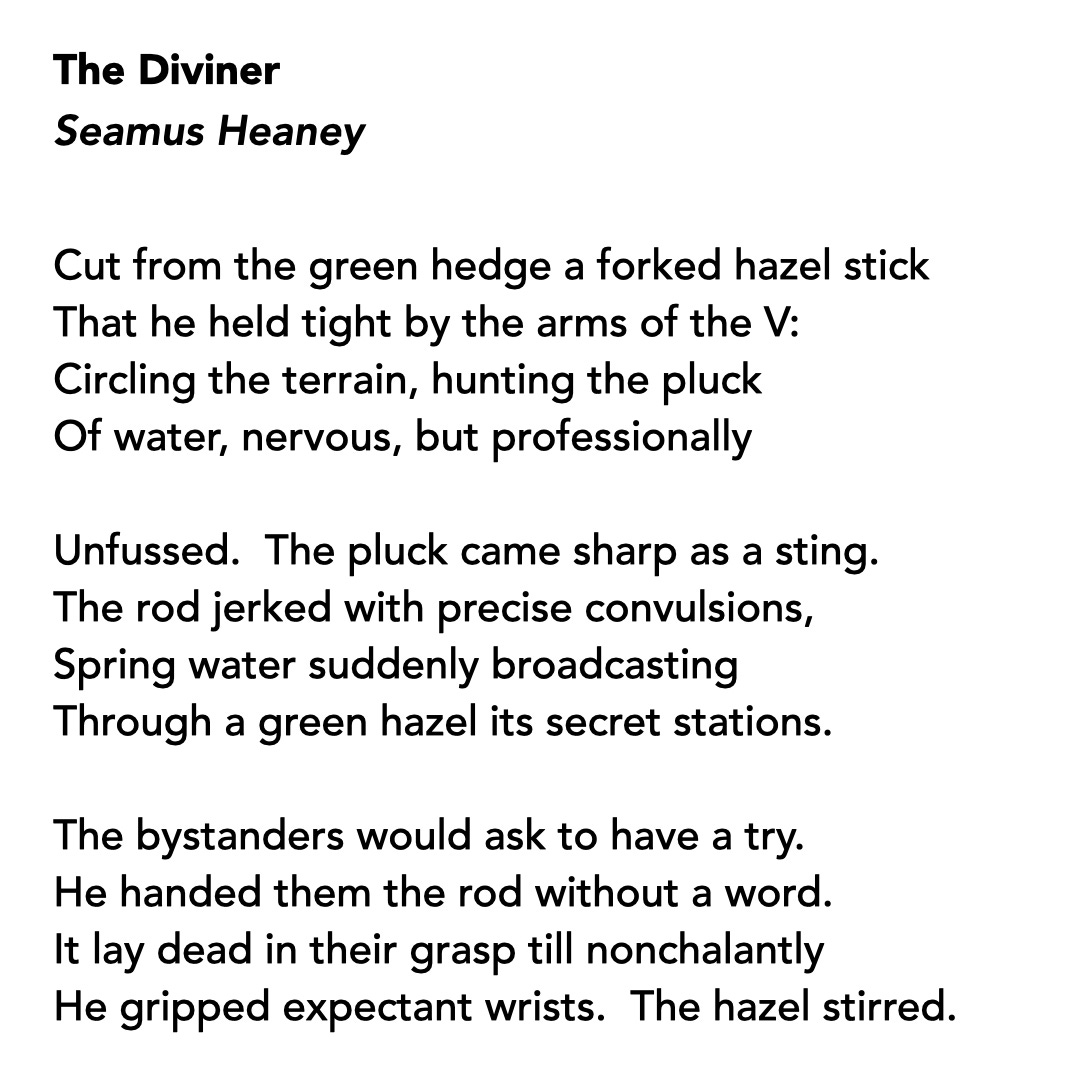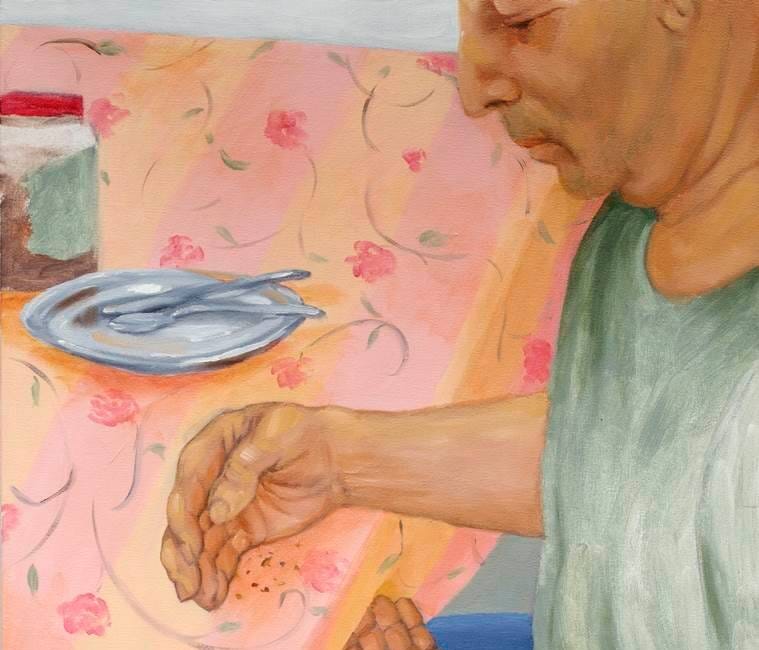Hello people, Eid Mubarak (belated). Unfortunately I could not wish you yesterday, because I was busy elsewhere. It was hard to ignore the pictures of sumptuous daawats that friends shared with me, and I felt momentarily content to see this much love amidst all the institutionalised hatred that continues to torment our hearts and minds in this country. I do not think it necessary to write about the recent happenings in the political sphere, since we are all tuned into the news and social media, at this critical juncture of ache din. Also, I find, nowadays, that reading and writing about beauty and kindness is somewhat reassuring; this, despite the political circumstances we find ourselves in.
As you know, I’m in the hills, and yesterday, our loving host took me, and another friend I made here (a pahadi, but from Uttarakhand), to a local harvest festival - ‘Juiya’/ ‘Jau’. The celebration is hosted by a powerful person from the community, and marks the first fasal of jau. I was told that this was usually an upper caste, ‘respected’ male member - in this case, a retired teacher/guruji, popular in the entire region for his samaaj seva. The guruji also sponsored the entire event.
Stalks of jau are cut, in an open field, and a ceremonious offering is made to the devji - the local deity, “Vasuki” Nag. The entire community gathers for food and drink, and a ritual performance that includes Natteiy - a divine dance to music enriched by regional instruments such as the Karnaal, Been (which is more like shehnai than the veena) and different kinds of dhols (daflis/drums). I witnessed the entire affair up close, and took videos like a typical tourist - some of the locals even got shots of me, with my phone held high. Perhaps I looked comical, and totally out of place - an unfit (every person I have encountered in this region is superbly fit climbing up and down entire hill faces with practiced ease), visibly urban fellow in the midst of all the god-fearing people.
Even though I went too close, the people (some of who we had made friends with) were really accommodating, and kept asking if we were properly fed and watered. When the dance of the gods began, it was hot (well, as hot as it gets here - one of the locals commented ‘27 degrees my god!’). I was feeling a little light headed, and started to float in the the foam of faith, and the being of the natural deity.
The drummers set off the evening with resounding thumps on dried goat-skin stretched taut, and my body shivered as I got pulled into the heady mahaul.
The two men playing Karnaals heaved their instruments on their shoulders and let off three long strident blasts.
And then the been player charged up the entire procession with soulful, but easy to sing-along melodies. The tunes ran the spectrum of bairagi, bhairavi and even, at times bilaval - but this is only my classically conditioned ear trying to place folk melodies within the straitjacket of raag music. I watched him closely, this shrewd looking kalakaar, and when he noticed me taking pictures and looking at him, I heard him perform a few musical flourishes, and I couldn’t help exclaiming ‘Kya baat hain’.
The man next to me, overheard me and smiled. To me that smile seemed to say “This is not entertainment. This is our faith.” I shivered, again, as the gods came close in that moment - close enough for me to the smell of the flowers in their numerous garlands; for the heady aroma to shoot up my nostrils and straight into my brain, before enveloping the heart.
The people were so loving, and many of them were taking pictures and videos too. Our friend, young Sheru baba, had told us we could take videos and photos, except during the final part - when the deity entered the body of one of the performers present, and started to speak and dance. A professional photographer was there too with his expensive camera and a tripod - I was not sure if the young student was hired by the hosts, or he was clicking images out of personal interest. When that moment came an old man next to me lightly tapped my shoulder and alerted me. By then, it had started to rain, and I was completely engrossed in the performance - watching the youngsters take turns as they held the deity on two bamboo poles on their shoulders.
I looked at the golden faces of the three bobbing figures, and as the miracle of that afternoon reverberated through my body, an old memory resurfaced. I remembered the cola in my ancestral village where we would watch fearfully, the ritual that the film Kantara made famous (in a popular and melodramatic way). We used to stay up all night during those annual festivals, feeling the indigenous god’s spirit (Naag devre/ Suryanarayan/Gooliga/Kalluti etc.) among us. A divine presence would enter the human body, and we would marvel at the sudden change in the demeanour of the performer. I remember being fascinated with the elaborate make up (apart from the intricate but majestic golden crown of the performer’s costume, and the colourful trousers, all other parts were derived from coconut tress or other native plants - even the skirt, which was crafted from thick veins from the coconut leaf).
There is an inarticulable affective wave that ripples through the very being of everybody present in that event. I have read accounts of ethnographers who have observed this kind of ‘sublime’ atmosphere, in shaman traditions - many of which are practised in adivasi communities in Karnataka, Chattisgarh, Andhra Pradesh, Kerala etc. I felt myself being carried in the current of the god’s dance.
Gopal ji would later tell me how he was transformed in that event. “Bhagvaan apne aap naachne lagte hain”. The people who are carrying him don’t put in any energy - they don’t manipulate the heavy idol, dressed up in finery and silk. The god enters the metal form we have given him, he said, and he starts to dance in ecstasy - the human made idol would bob up and down - showing his power. “Maine khud ye mehsoos kiya hain. Main to Master hoon, jhoot kyu boloonga” (I have experienced this myself. I’m telling the truth, by god - I’m a teacher, I have no reason to lie.)
I nodded solemnly - I had felt it myself, that otherworldly force. For me this invisible power of the divine was no different from the potency of art to move. What else could explain people bursting into tears in front of huge Rothko prints (composed of only one or two colours) in a museum?
It rained as the god entered the performers’ bodies. I looked up and noticed the fog that had started to form, like a necklace around the hills.
the spirit entered the beenkar’s body too, and he let out a roar, as he untangled his locks. he put his right hand up in the air, and started to make a gesture with his second and third fingers. somebody gave him a sharp metallic needle, and he rolled his eyes heavenwards before piercing his tongue. another figure planted a ceremonial traditional cap on his head and held it there, as the laughter of the god echoed through his body, silencing the hills, and the hoards of people watching. I felt my heart skip a beat, as the sea of faith washed over us in cool torrents. We stood there, transfixed, till the end, and my reverie broke only when the karnaal players came next to the deity, and placed their instruments like staffs on the ground, in conclusion. I struck up a conversation with one of them, and asked him what was going to happen next. My friend joined us, and we remembered we hadn’t eaten anything. So, after congratulating the karnaal player on his awe-inspiring performance, and doing a namaste in front of the deity, we rushed to the enclosure where food and drink was being served, and managed to reach there just before the food got over.
The poem I share with you today, is, again, by Heaney. It speaks about a ‘water-diviner’. I think, perhaps, if Heaney was with me, yesterday, he would understand what I (and all the others present there) felt, and not dismiss the event with the scythe of rationality.
Heaney has been featured on Poetly before…
Damn! as I looked for old posts about Heaney, I noticed that I have shared ‘The Diviner’ before - E. V. Ramakrishnan's 'Avvaiyar in a Haunted Choultry' & Seamus Heaney's 'The Diviner' . Hmmm let it be. Maybe new members could derive some joy from the poem.
Two days ago I had shared his ‘Digging’ on the occasion of ‘Father’s Day’. 3 years ago, I had shared his ‘Writer and Teacher’ , in a similar thematic commentary, but this time, it was the occasion of Guru Poornima. These are all beautiful poems, and I urge you to let Heaney take you by the hand through sensorial imaginariums, and worlds of wonder, rooted, and offset by the unwieldy, gritty realism of political unrest, and struggles for survival.
Feel free to mail poetly@pm.me with any questions, queries, or comments. I will write back as soon as I find the space, and the time.
If you like what you read, do consider ‘buying me a coffee’.



